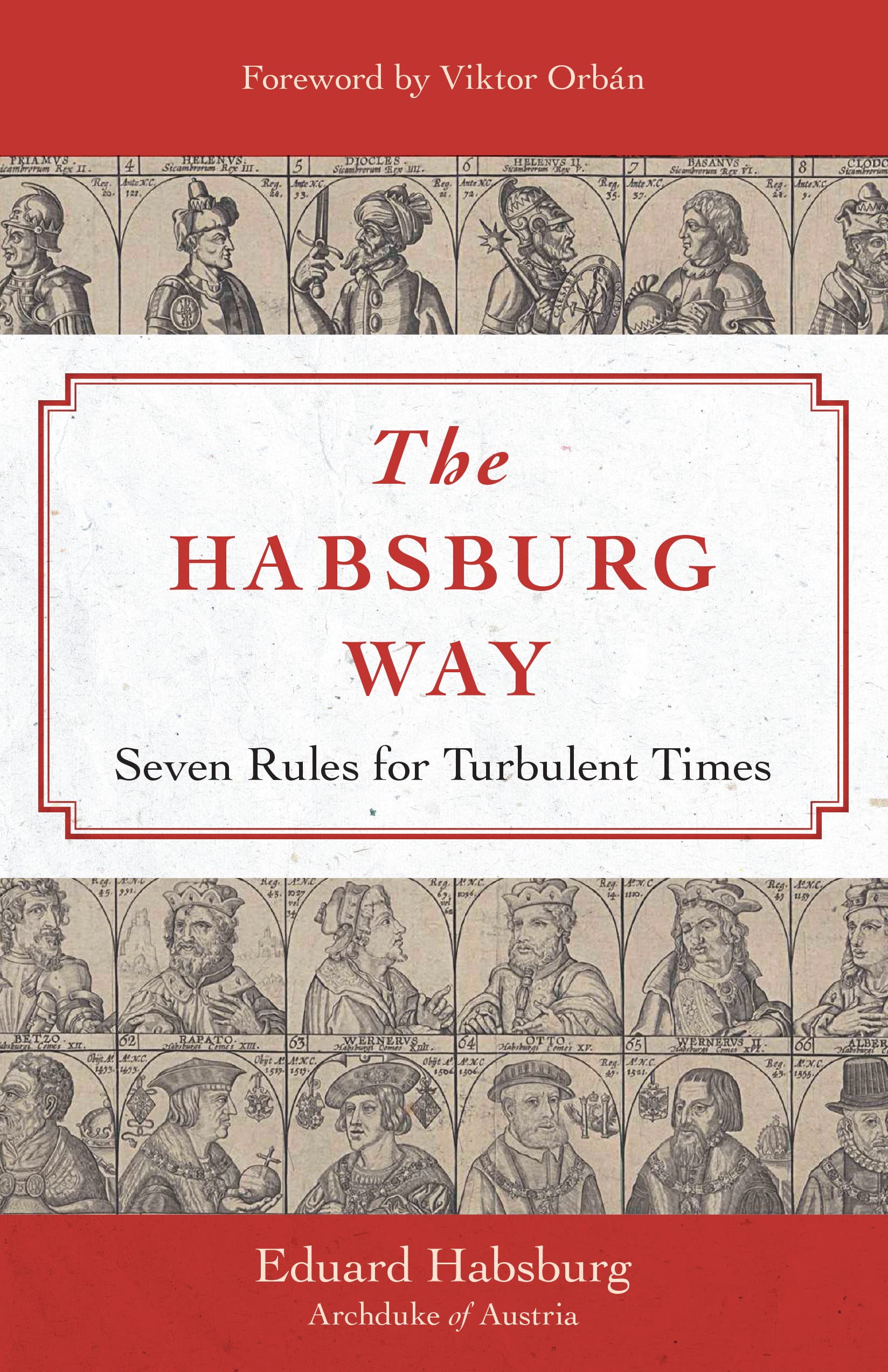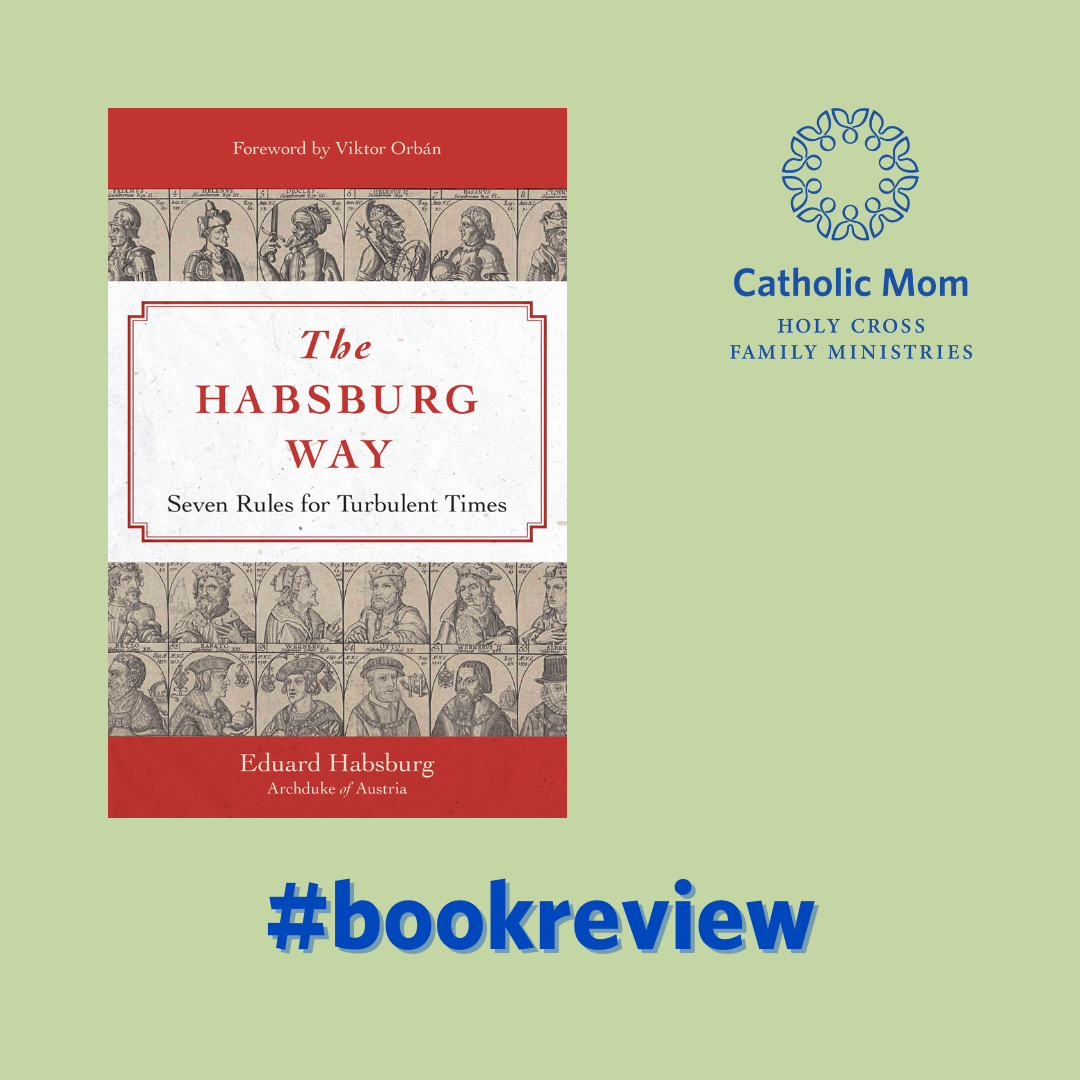
Taryn DeLong reviews The Habsburg Way: Seven Rules for Turbulent Times.
For a country founded by people trying to escape the monarchy, we Americans love stories of royalty. I’m no exception, though I know more about the British monarchy than others. I have, however, heard of the Habsburg family—the family that produced both Marie Antoinette and Blessed Karl of Austria, who was emperor from 1916 to 1918 and was beatified in 2004 by Pope St. John Paul II.
The fascinating family history of the Habsburgs is full of drama, war, assassinations—and Catholicism. The new book The Habsburg Way: Seven Rules for Turbulent Times, published by Sophia Institute Press, provides an inside look at the family and the lessons we can learn from its members. It’s a very inside look, in fact, because it’s written by a member of the family—Eduard Habsburg, Hungary’s ambassador to the Holy See, an archduke of Austria, and great-great-great grandson of Franz Josef, Blessed Karl’s grand-uncle and the emperor who preceded him.

A Royal Rule of Life
The seven rules for life Archduke Habsburg shares in his book are not official rules of the Habsburg family. Rather, they are lessons he has distilled from his own family relationships and his study of his family’s history.
The Habsburg family was once “the most powerful dynasty in Europe,” as Archduke Habsburg writes, having included both the first Holy Roman Emperor (Rudolf) and many children who, through strategic marriages, led countries across Europe. (Empress Maria Theresia had 16 children, one of whom was Marie Antoinette.) They were mostly a Catholic family—some in name only and some devout—and some members of the family helped keep Catholicism alive despite the best efforts of the Protestant Reformation. Blessed Karl was the last emperor of Austria, as the monarchy ended in 1918.
Archduke Habsburg believes that the values that have been part of the Habsburg family for so many centuries are important today. He wrote the book to share them and inspire their implementation both within families and even on a broader scale. The seven rules are:
- Get married (and have lots of children).
- Be Catholic (and practice your faith).
- Believe in the empire (and in subsidiarity).
- Stand for law and justice (and your subjects).
- Know who you are (and live accordingly).
- Be brave in battle (or have a great general).
- Die well (and have a memorable funeral).
Some of these rules will be familiar to many Catholics, as they are also Catholic principles: the focus on family life and openness to children, subsidiarity, justice, and having a good death.
A Story of a Family
While I would mostly recommend The Habsburg Way to people who are particularly interested in European history, there are elements that would be enjoyable for anyone. Archduke Habsburg tells a lot of stories about his ancestors. Some of those stories are about role models. Some are instructive in their example of how not to behave. Many are interesting or entertaining to read.
My favorite story is of Blessed Karl and his wife Zita (declared a Servant of God by Pope Benedict XVI).
The two of them really shared the same vision of family life and faith. Karl famously said, after their wedding, "now we must help each other into heaven," which is as perfect a goal of Christian marriage as there ever was.
Karl and Zita served their people together during World War I. They were exiled after the monarchy ended but were able to be reunited with their children. Sadly, Karl died in 1922, while Zita was pregnant with their eighth child. It is largely due to their example that Archduke Habsburg writes:
Romance, while wonderful, is perhaps slightly overrated in our times, at least when it comes to building long-lasting relationships. In the end, marriage really is about serving each other—and helping each other into Heaven.
A Good Death
As Catholics, we are taught that how we die is important. We are given the Sacraments of Confession and Anointing of the Sick to help us reach Jesus after we die. As a devout Catholic and member of a historic Catholic family, Archduke Habsburg devotes an entire chapter to the topic of death. Rather than being morbid, I found it moving.
First, he shares the traditional Habsburg “knocking ritual,” the ceremony with which Habsburgs are buried. It is reflective of the Catholic approach to death. “Memento mori,” as they say—we remember that we are dust and that we will return to dust. We remember our sins, confess them, and receive absolution. We are also called to die patiently and trusting in God’s mercy.
Again, Blessed Karl is a role model. While he was dying, he said, “If one didn’t have prayer or the devotion to the Sacred Heart, all of this [suffering] would not be tolerable.” He called his son Otto into his room so he could see “how an Emperor dies,” and he died in Zita’s arms, whispering the name “Jesus.”
Karl’s manner of death would never have occurred in a soul that had not been shaped by a life of daily Holy Mass, frequent rosary prayer, devotion to the Sacred Heart, and regular Confession.
Here, Archduke Habsburg reminds us of some of the ways we can prepare for death years before we actually die. It’s a fitting conclusion to the story he shares in his book.
I recommend The Habsburg Way for anyone interested in Catholic or European history. It may be a good birthday or Christmas gift for the history buff on your list (or for yourself!). It may also be a good alternative to the more gossipy books out there on the British monarchy.
Ask for The Habsburg Way at your local Catholic bookseller, or order online from Amazon.com or the publisher, Sophia Institute Press.

Copyright 2023 Taryn DeLong
Images: Canva
About the Author

Taryn DeLong
Taryn DeLong is a full-time homemaker who lives outside Raleigh, NC with her husband and their little girls. She is also co-president of Catholic Women in Business and co-author of Holy Ambition: Thriving as a Catholic Woman at Work and at Home(Ave Maria Press, 2024). Follow her on LinkedIn or Instagram.


.png?width=1806&height=731&name=CatholicMom_hcfm_logo1_pos_871c_2728c%20(002).png)
Comments